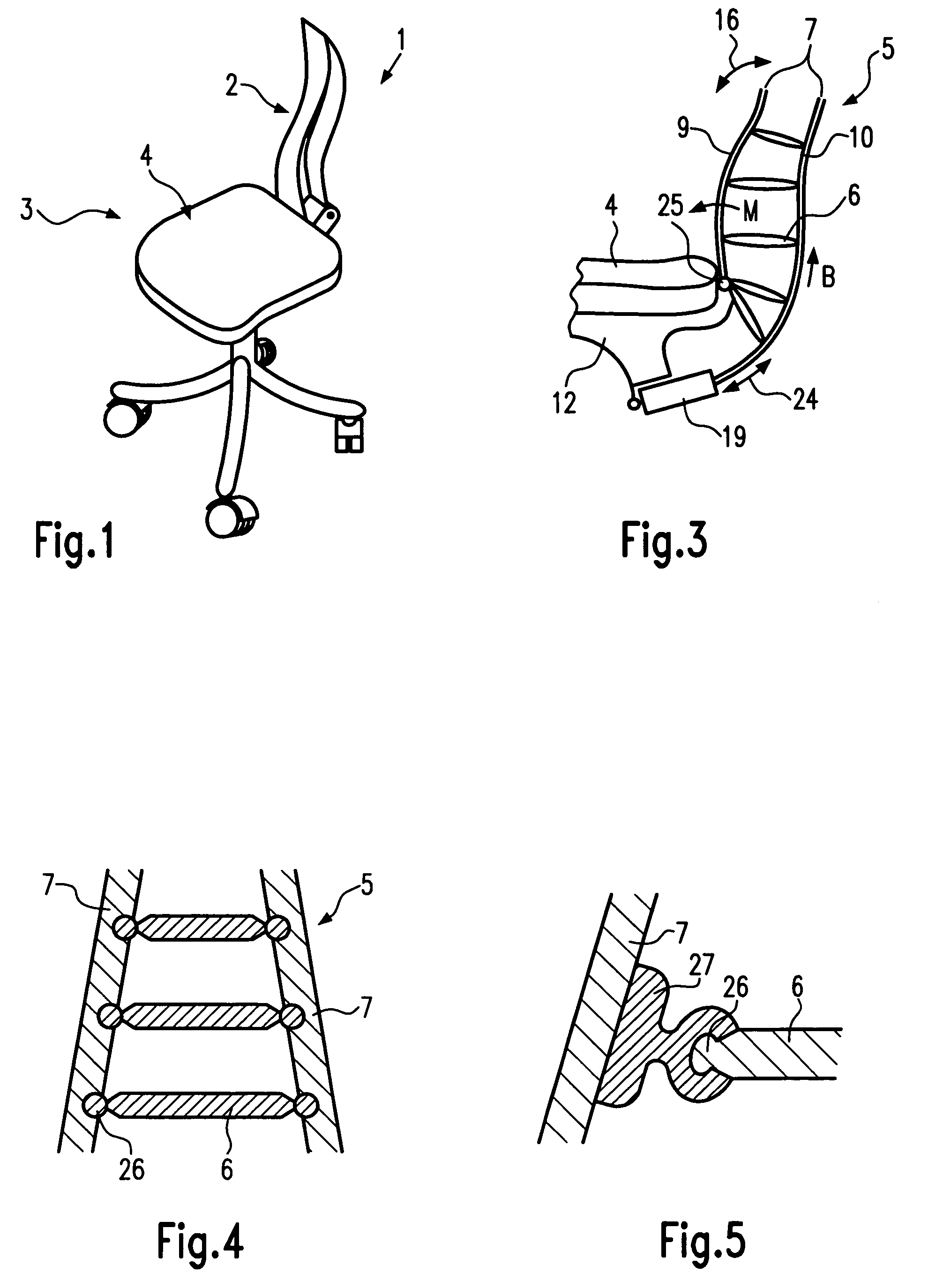Seating element
a technology of seat and skeleton, which is applied in the field of seat elements, can solve the problems of time-consuming and common processes, and achieve the effects of improving the stability of the skeleton and improving the load distribution of the seat for
- Summary
- Abstract
- Description
- Claims
- Application Information
AI Technical Summary
Benefits of technology
Problems solved by technology
Method used
Image
Examples
first embodiment
[0046]FIG. 1 shows a seating element 1 according to the invention. The seating element 1 has a support area formed as a backrest 2 of a chair 3 or as a seat 4. The seating element 1, however, may not only be used on a chair 3 but also on any other structure designed to support the human body, such as a bed, a stretcher, a couch, or a stool. The structure, which is equipped with seating element 1 may be of conventional design, as shown in FIG. 1 where a common office chair is shown for illustrative purposes.
[0047]The design of a first embodiment of seating element 1 is shown in more detail in FIG. 2. Seating element 1 comprises a skeleton 5 having a plurality of ribs 6 pivotably attached to an at least sectionwise flexible skin 7 and having at least one tension element 8 extending between at least one of ribs 6 and skin 7. Skin 7 may be covered with a soft, textile material or fabric to increase comfort. Tension element 8 may be a rope, a cord, a webbing, or a belt.
[0048]In the embod...
second embodiment
[0070]FIG. 9 shows a schematic representation of a seating element 1 according to the invention. In this configuration, seating element 1 is configured as an integrally molded chair 3, substantially formed as a single piece forming both seat 4 and back 2. Ribs 6 are molded in one process with skin 7 from a plastic material. The idle position as shown in FIG. 10 is obtained by careful design of the mold form. The position and orientation of ribs 6 is chosen such that, using standard measures of human shape and weight, skeleton 5 reacts to seating forces by moving parts against the seating force only in locations which are ergonomically advantageous. Various degrees of elasticity of skin 7 and ribs 6 are obtained by varying the material thickness throughout the seating element 1. For example, stiff areas may have higher material thickness.
[0071]In a modification of the embodiment of FIG. 9 only seat 4 or only back 2 may be molded as a single piece. The mold, or one half of the mold ma...
PUM
 Login to View More
Login to View More Abstract
Description
Claims
Application Information
 Login to View More
Login to View More - R&D
- Intellectual Property
- Life Sciences
- Materials
- Tech Scout
- Unparalleled Data Quality
- Higher Quality Content
- 60% Fewer Hallucinations
Browse by: Latest US Patents, China's latest patents, Technical Efficacy Thesaurus, Application Domain, Technology Topic, Popular Technical Reports.
© 2025 PatSnap. All rights reserved.Legal|Privacy policy|Modern Slavery Act Transparency Statement|Sitemap|About US| Contact US: help@patsnap.com



